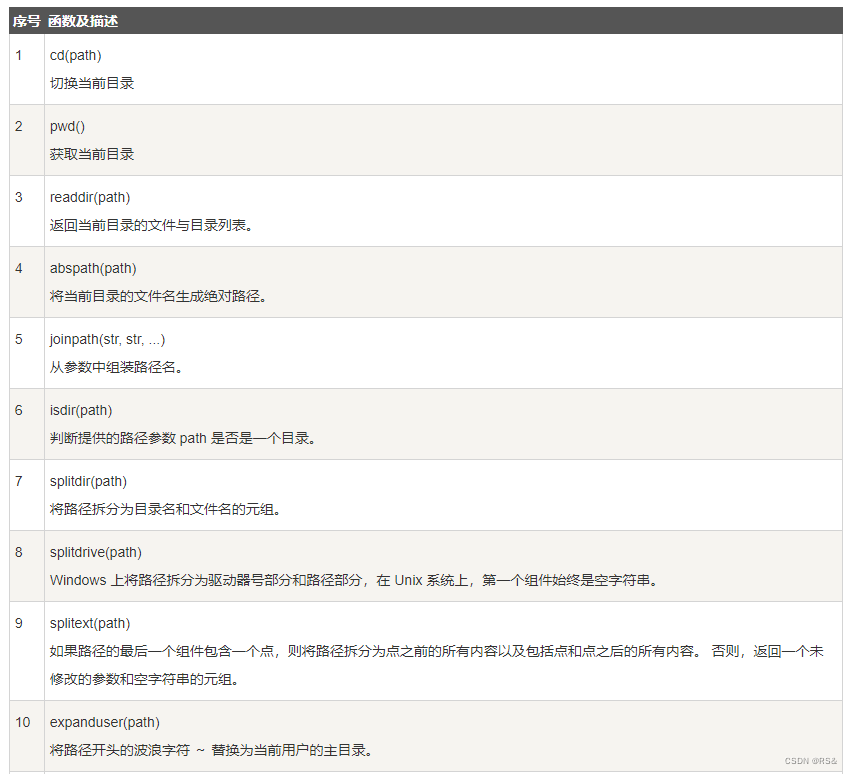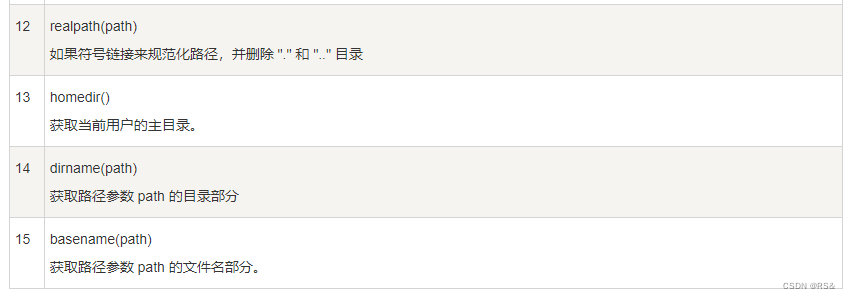1、Julia读取/保存csv数据
读取:
using CSV
df = CSV.read("mydata.csv")
保存为csv格式:
# 创建 DataFrame
df = DataFrame(height = h, discharge = q)
# 将 DataFrame 写入 CSV 文件
CSV.write("output.csv", df)
报错:UndefVarError: writeshortest not defined
解决:https://discourse.julialang.org/t/csv-write-writeshortest-error/90336/8
Converting the entire data frame content into string type:CSV.write(“temp.csv”,string.(df))
或者更新CSV版本。
文件读写常用函数:


截图来自菜鸟教程:
Julia 文件(File)读写
加载和保存文件:https://cn.julialang.org/JuliaDataScience/load_save
2、Julia路径拼接函数
using CSV# 定义文件路径
directory = "path/to/directory"
filename = "file.csv"
#表示路径的两种方式:注意双引号
#path = "C:\\Users\\Username\\Documents\\file.txt",用\\
#path = "C:/Users/Username/Documents/file.txt",用/
#不支持类似Python中r转字符# 拼接文件路径
filepath = joinpath(directory, filename)# 读取CSV文件
data = CSV.read(filepath,DataFrame)# 打印数据
println(data)
3、表示一列数据最大值和最小值
struct Datawl::Vector{Float64}
enddata = Data([3.0, 1.0, 4.0, 1.0, 5.0]) # 示例数据h = data.wlmax_h = maximum(h)
min_h = minimum(h)println("h的最大值:", max_h)
println("h的最小值:", min_h)
4、Julia自定义函数并调用
# 定义一个简单的函数
function greet(name)println("Hello, $name! Welcome to Julia programming!")
end# 调用函数
greet("Alice")
实际应用场景:
function estimated_discharge(rc, h)return discharge(rc, minimum(h))
end# 示例数据
h = [1.0, 2.0, 3.0, 4.0, 5.0]
rc = 0.5 estimated_discharge_values = Float64[] # 用于存储计算结果的数组for height in hpush!(estimated_discharge_values, estimated_discharge(rc, [height]))#push!是用于向数组(Array)添加元素的函数。当你调用push!(array, element)时,它会将element添加到array的末尾,并返回修改后的数组。#push!函数会改变原始数组,而不是创建一个新的数组。这种操作称为“原地修改”(in-place modification)。
endprintln(estimated_discharge_values)
5、Julia循环语句
for 变量名 in 集合循环体
end
应用:for循环遍历一个文件夹下所有的csv文件
using CSV# 定义文件夹路径
folder_path = "path_to_your_folder"# 获取文件夹中所有文件的列表
files = readdir(folder_path)# 遍历文件夹中的所有文件
for file in filesif endswith(file, ".csv")# 如果文件是CSV文件,则读取文件内容data = CSV.read(joinpath(folder_path, file))# 在这里可以对数据执行任何操作println("处理文件: $file")# 例如,打印数据的前几行println(data[1:3, :])end
end
6、Julia Try-Catch语句
try# 尝试执行的代码块# 如果出现异常,代码将跳转到catch块之后的代码println("尝试执行代码块")error("这里出现了一个异常")
catch# 这里是在出现异常时需要执行的代码块,如果不需要处理异常,可以留空println("出现异常,跳过处理")
endprintln("程序继续执行")
学习资料整理:
1、菜鸟教程:https://www.runoob.com/julia/julia-tutorial.html
2、Julia中文社区:https://cn.julialang.org/JuliaDataScience/











)

】初识图论)





